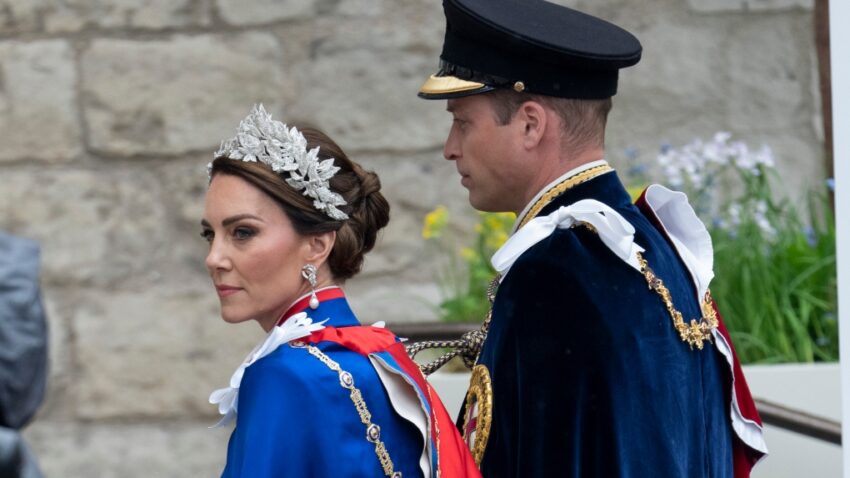In a surprising move, Catherine, the Princess of Wales and wife of Prince William, opted for a floral headpiece instead of a tiara at King Charles’ coronation.
The choice aligned with the green theme set by the King for the occasion.
However, this decision did not go unnoticed by Meg and the Sussex Squad, who took to social media to mock Princess Catherine for her unconventional choice.
Speculations arose that King Charles disliked Kate, hence the absence of a tiara.
But such claims seem baseless and unfounded.
It is essential to note that none of the women present at the coronation wore a tiara.
So, does this mean King Charles despises all the women in the family?
The situation seems far more straightforward than that.
It appears as though the palace has made a deliberate decision to forego tiaras altogether, favoring floral headpieces instead.
This move suggests that there is no ill will or spite behind King Charles’ choices.
Coming to Princess Catherine’s defense, King Charles enlisted the help of his friend Edward Enninful, the editor-in-chief of British Vogue magazine.
In an article published by Vogue, it was explained that Catherine, along with Sophie and Charlotte, wore the headpiece as a tribute to the King.
King Charles, a long-time advocate for the environment, expressed his wishes for a coronation that embraced nature.
This theme was evident in the invitations, which featured the Green Man, a symbol of spring and rebirth from British folklore.
The departure from tradition was also in line with King Charles’ desire for a meritocratic coronation rather than one rooted in aristocracy.
As a result, many community heroes were invited to the event, replacing the usual presence of the aristocracy.
This shift holds significant meaning beyond mere fashion coordination.
The floral tiaras worn by the women symbolize the Green Man motif that was prevalent throughout Charles’ coronation.
The choice of floral tiaras was fitting for the occasion, as a majority of the attendees were individuals associated with the charities supported by King Charles III.
In the past, these positions would have been occupied by earls and lords, primarily from the nobility.
However, this time around, many members of the House of Lords were not even invited.
This deliberate exclusion aimed to create an inclusive coronation, where common people in the abbey did not feel left out or marginalized.
Furthermore, Charles has always demonstrated a deep interest in nature, gardening, and environmental preservation.
Seeing his granddaughter and daughter-in-law donning botanical motifs pays homage to his passion and causes.
Catherine’s decision to showcase the work of UK craftspeople and a prominent British brand reflects her commitment to public service over royal jewels.
It takes a certain humility and confidence to prioritize others over personal adornments, especially when a grand tiara is an option.
However, Catherine understands that her time to wear such a dazzling accessory will come eventually.
This choice also serves as a valuable lesson for Princess Charlotte, who is next in line after Prince George.
It emphasizes the importance of treating others equally and placing the community’s needs before personal desires.
